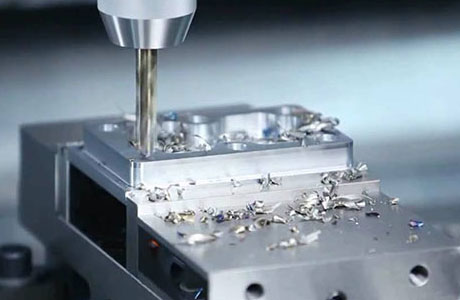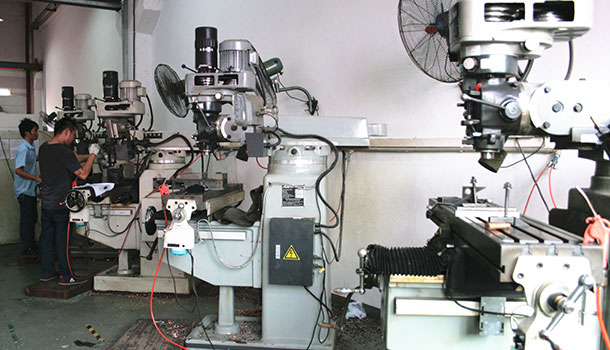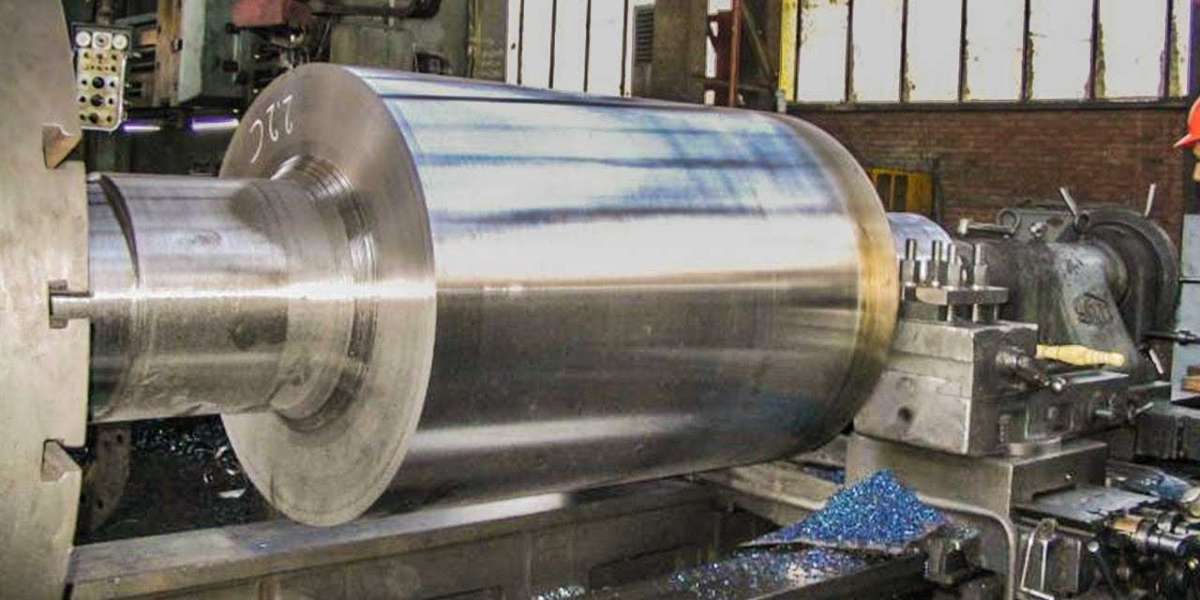There are five axes in total. Machining, as the name implies, is a type of computer-controlled machining that involves cutting and shaping metal. A five-axis machine tool or a five-axis machining center is the term most commonly used to describe this type of machine tool, which uses linear interpolation motion to move any five coordinates in any of the four axes (X, Y, Z, A, B, and C) using linear interpolation motion. Do you, on the other hand, have a thorough understanding of five-axis milling?
The belief that five-axis CNC machining technology is the only way to machine continuous, smooth, and complex surfaces has been held for decades by a large number of people. Unfortunately, this belief has been proven to be unfounded. The use of five-axis machining technology will become increasingly popular as soon as designers and manufacturers encounter insurmountable difficulties when designing and manufacturing complex surfaces. Machine tool technology with five axes is both the most difficult and the most widely used technology in the world of CNC technology, according to the CNC Technology Association. It is used to efficiently, precisely, and automatically machine complex surfaces in a fully automated manner, with computer control, a high-performance servo drive, and precision machining technology as part of the overall system. It is widely accepted that when it comes to manufacturing equipment, the five-axis linkage numerical control technology is a symbol for the level of automation achieved by a country's production equipment. A strategic material for implementing the export license regime, the five-axis CNC aluminum has always been regarded as such by the western industrialized countries because of its unique status, particularly because of its significant impact on the aviation, aerospace, and military industries, as well as its technical complexity. This has been the case since the establishment of the export license regime.
When viewed from the perspectives of technology and programming, five-axis CNC machining for complex surfaces offers the following advantages over three-axis CNC machining:
Improve the overall quality and efficiency of the processing by following these steps:
2) Extend the time period in which the process is applied.
1) Be familiar with the latest developments in compound development.
On the other hand, the five-axis CNC machining process, including its CNC programming, CNC system, and machine tool structure, is significantly more complicated than the three-axis CNC machining process. This is due to the interference and position control of the tool in the processing space, as well as the tool's own position control and control of the tool's own position. While the term "five-axis" may be simple to pronounce, putting it into practice is extremely difficult! Furthermore, it is even more difficult to perform well in such an environment!
Motion on five axesMachining center programming is a difficult skill to master because it is abstract.
This is a problem that affects every single traditional CNC programmer, as well as their clients and customers. Comparing five-axis CNC machine tools to their counterparts in the three-axis CNC machine tool category, five-axis CNC machine tools exhibit a greater variety of structural variations; whereas the same NC code can be used to achieve the same processing effect on different three-axis CNC machine tools, the NC code of a specific five-axis machine tool cannot be used on all types of five-axis machines. NC programming, in addition to coordinating calculations involving linear motion, must also coordinate calculations involving rotating motion. For example, rotational angle travel inspection, nonlinear error checking, tool rotational motion calculation, and other calculations are examples of this type of calculation. It is necessary to process a large amount of information; as a result, NC programming is extremely abstract in its nature.
Programming and operation of a five-axis CNC machining center are closely related skills, and if the user incorporates special functions into the machine, the programming and operation will become even more difficult. It will only be through repeated practice that programmers and operators will be able to master the necessary knowledge and abilities. An important impediment to the widespread adoption of five-axis computer numerical control technology is a scarcity of skilled programmers and operators in the industry.
Untold numbers of domestic manufacturers have made significant investments in five-axis CNC machine tools that have been shipped from abroad. It is currently difficult to realize the inherent functions of five-axis CNC machine tools, and the utilization CNC finishing rate of these machines is extremely low due to a lack of technical training and services available in the marketplace. The use of three-axis machine tools is frequently preferred over the use of two-axis machine tools. The specifications for the NC interpolation controller and servo drive system are extremely strict.
Whenever there is motion on any of the five coordinate axes in a five-axis machine tool, that movement is referred to as synthesis motion. It is not only more difficult to perform the interpolation operation with the addition of the rotation coordinates, but it also has the additional effect of decreasing the machining accuracy significantly as a result of the small error in the rotation coordinates being introduced. Because of this, greater operational precision from the controller is required. Servo drive systems with good dynamic characteristics and a wide speed regulation range are required by the kinematic characteristics of a five-axis machine tool that operates over a wide speed regulation range, as illustrated in Figure 1.
The verification of NC programs on five-axis CNC machines is of particular importance in this context.
In order to improve machining efficiency, it is critical that the traditional trial cutting method verification method be phased out completely. Due to the high cost of the workpiece that is typically processed by a 5-axis CNC machine, it becomes increasingly important to verify the NC program before running it. Furthermore, collision is a common problem in five-axis CNC machining, and it can include: colliding with the workpiece at extremely high speeds, colliding with the tool and the machine tool, fixture, and other equipment in the processing range, and colliding with the workpiece at extremely high speeds. Collisions with the workpiece at extremely high speeds are particularly dangerous. It is difficult to predict when a collision will occur in five-axis numerical control, and the verification program must first conduct a thorough analysis of the machine tool kinematics and control system before proceeding with the verification process.
A tool path can be processed immediately when an error is detected by the CAM system; however, if an error is discovered in the NC program during the machining process, the tool path cannot be modified immediately, as it can in the three-axis CNC system. Three-axis machine tools give the operator the ability to change parameters such as tool radius and tool length in real time. It becomes more complicated when it comes to five-axis machining because changes in tool size and position have a direct impact on the subsequent rotational motion trajectory of the machine.
a device for post-processing
Unlike three-axis machine tools, a five-axis machining tool has two rotating coordinates in addition to its other three axes, which makes it distinct from the former. In order to correctly convert the tool position from the workpiece coordinate system to the machine tool coordinate system, multiple coordinate transformations are required in the middle of the conversion process. It is possible to generate the post-processor for a three-axis CNC machine tool by using one of the widely used post-processor generators that are currently available on the market. All that is required is the entry of the machine tool's basic parameters into the post-processor generator. This is all that is necessary. At the moment, only a few improved post-processors for five-axis CNC machine tools are available on the market for purchase. Work on the post-processor for the five-axis CNC machine, which is currently under development, needs to be carried out.
When using three-axis linkage, it is not necessary to take into consideration the location of the workpiece origin on the machine tool table when calculating tool trajectories, and the post-processor can automatically calculate the relationship between the workpiece coordinate system and the machine tool coordinate system. For example, when using a five-axis linkage on a horizontal milling machine with five axes of X, Y, Z, B, and C, when generating the tool path for the workpiece on the C turntable, it is necessary to take into consideration both the position of the workpiece on the C turntable and the distance between the B and C turntables. Typically, when clamping workpieces, workers spend a significant amount of time dealing with the positional relationships that exist between the workpieces. Installation of the workpiece and processing of the tool path will be greatly simplified once this information has been processed by the post processor; simply clamping the workpiece to the table, measuring the position and orientation of the workpiece coordinate system, and inputting this information into the post processing system will be sufficient. It is possible to generate the appropriate NC program from the tool path after it has been post-processed.
With Nonlinear Errors, Error and Singularity Problems are posed.
Because of the introduction of rotary coordinates, designing machining service the kinematics of five-axis CNC machines is significantly more difficult than designing the kinematics of three-axis CNC machines. One of the first issues that arises in relation to rotation is the phenomenon known as nonlinear error. Increasing the step size and thereby controlling nonlinear errors that are caused by programming errors is a viable option. During the pre-calculation stage, the programmer will be unable to determine the magnitude of the nonlinear error due to the nonlinearity. After the post-processor has generated the machine program, it is only possible to calculate the nonlinear error. It is possible to solve the problem in this case by employing toolpath linearization techniques. Even though some control systems are capable of linearizing the toolpath while it is being machined, this is typically done during the post-processing stage.
Another issue that can arise as a result of rotating axes is the phenomenon of singularity. Despite the fact that it is only a few degrees in magnitude, even a small oscillation near the singular point will cause the rotation axis to flip 180 degrees, which can be extremely dangerous if the singular point is at one of the rotation axis' extreme positions.








